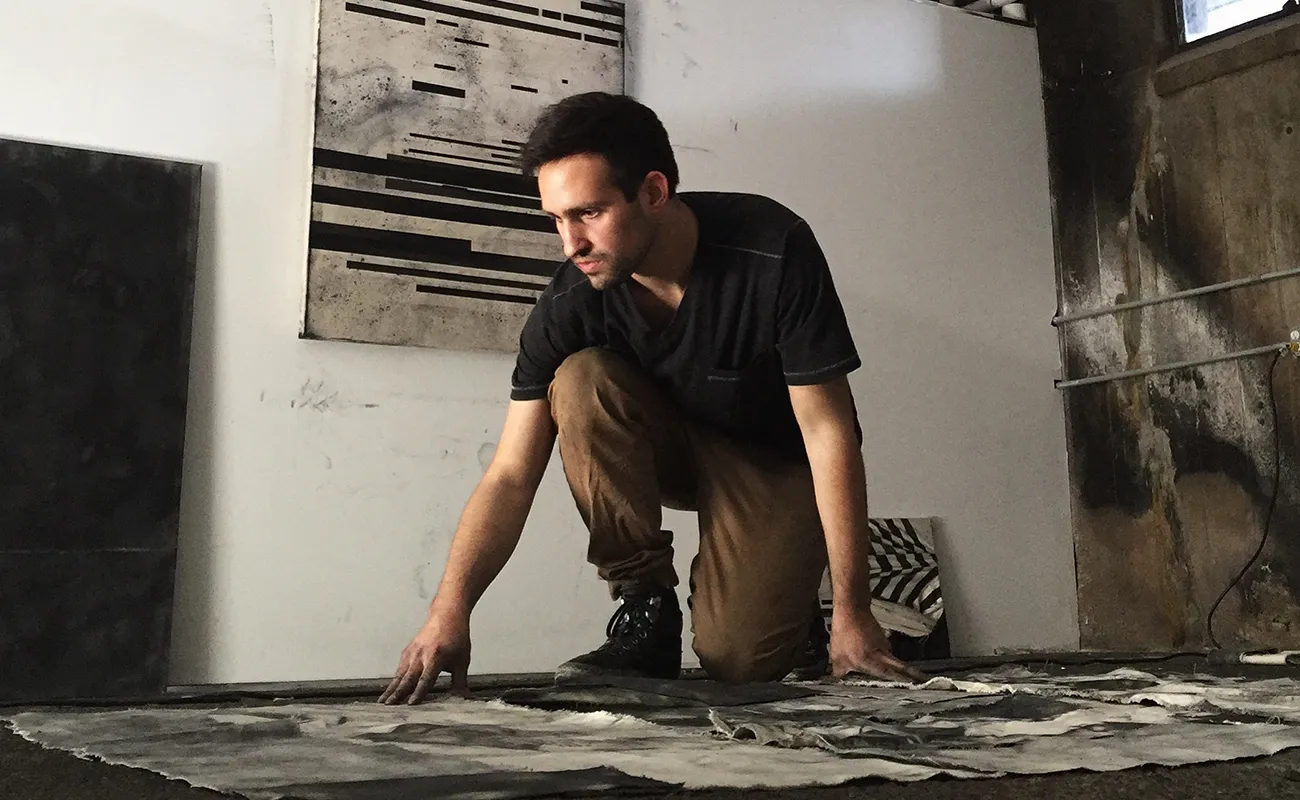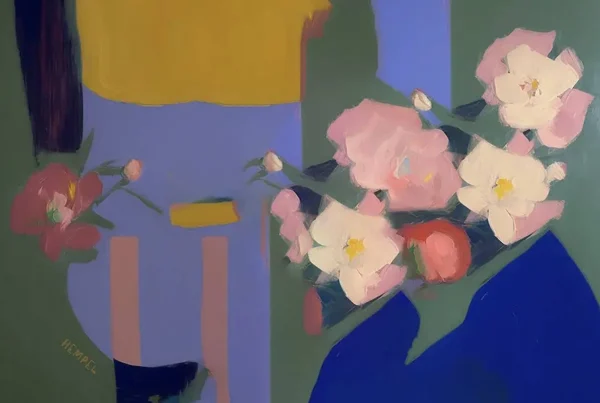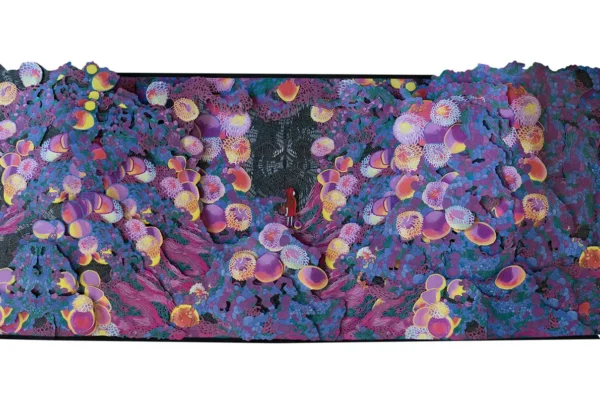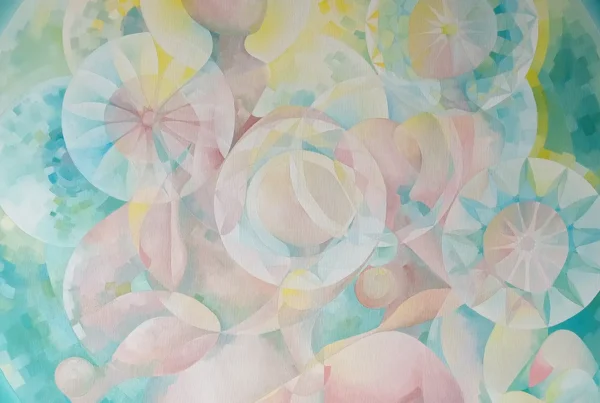Early Inspirations: The Foundations of a Narrative Painter
Born in 1993 in Aurora, Colorado, Paul Weiner’s creative journey began long before he earned his BFA in Painting from Syracuse University in 2015. The roots of his artistic vision can be traced back to his childhood, where his grandfather, Leonard, played a pivotal role in shaping his imagination. Leonard had a unique talent for storytelling, often concocting fantastical, fake news stories from the newspaper, which he shared with Weiner and his brother over glasses of apple juice. These stories, though entirely fictional, were presented with such conviction that they felt real. This early exposure to the power of narrative and the blurring of reality and fiction left an indelible mark on Weiner, planting the seeds for his later exploration of themes such as disinformation in his work.
Weiner’s influences, however, are not confined to his childhood. His artistic development has been deeply shaped by the works of prominent artists like Mark Bradford, Jenny Holzer, and David Hammons, whose explorations of social and political themes resonate with his own. Moreover, the rise of Instagram as a platform for emerging artists between 2015 and 2018 brought Weiner into a creative dialogue with peers such as Jenny Brosinski and Richie Culver. This digital community fostered a new wave of artistic exchange, one that Weiner both contributed to and drew inspiration from, further solidifying his place in the contemporary art scene.
The blending of these early inspirations and influences forms the backbone of Weiner’s work. His paintings, rich in symbolism and abstract concepts, reflect a deep engagement with the narratives that have shaped his life. From his grandfather’s imaginative tales to the complex dialogues within the art community, Weiner’s work is a testament to the power of narrative in art, inviting viewers to explore the blurred lines between truth and fiction.

Paul Weiner: The Dance Between Abstraction and Conceptualism
At the heart of Paul Weiner’s artistic practice lies a delicate balance between abstraction and conceptualism. His creative process often begins with a concrete symbol or idea, which he gradually abstracts, allowing it to evolve into something more elusive and intangible. A striking example of this is his use of the American flag, a potent symbol of national identity, which he repurposes in his art. Weiner employs the flag as a brush, or in monoprinting, transforming it from a symbol of patriotism into a relic of the painting process. This act of abstraction serves to challenge the viewer’s perceptions, encouraging a reconsideration of the flag’s symbolic value.
Weiner’s exploration of abstraction reaches new heights with his charcoal abstractions, which he initially conceived as post-object paintings. These works were designed for viewing on Instagram, becoming symbols tailored for an online audience. As his practice evolved, so did the abstraction, culminating in the use of AI-generated installation shots of paintings that do not exist in the physical world. This foray into digital abstraction is central to Weiner’s work, reflecting the increasingly fragmented nature of reality in the internet age.
The interplay between abstraction and conceptualism in Weiner’s work is not just a stylistic choice but a commentary on the broader cultural landscape. By starting with something tangible and allowing it to morph into abstraction, Weiner invites his audience to engage with the complexities of perception and the shifting boundaries between the real and the imagined. His work becomes a mirror to the disorienting experience of navigating contemporary life, where symbols and meanings are constantly in flux.

A Global Canvas: Weiner’s Transformative Residencies
Paul Weiner’s career has been marked by a series of transformative experiences that have significantly shaped his artistic voice. Among these, his participation in prestigious art residencies stands out as particularly impactful. In 2019, Weiner caught the attention of renowned artist Kehinde Wiley, who purchased several of his paintings and invited him to join the Black Rock Senegal residency. Although the residency was still under construction at the time, the brief but intense experience in Dakar left a lasting impression on Weiner. The city’s vibrant energy and the cultural exchange with other artists at the residency became a catalyst for further evolution in his work.
Another pivotal moment in Weiner’s career came when curator Aaron Levi Garvey invited him to the Long Road Projects residency in Jacksonville, Florida. This opportunity, coupled with the support of gallery owner Markus Kersting in Cologne, who helped establish a market for Weiner’s work in Europe, played a crucial role in broadening his artistic horizons. These experiences not only expanded Weiner’s exposure but also deepened his understanding of the global art landscape, allowing him to incorporate diverse influences into his practice.
These residencies provided more than just space and time to create; they offered Weiner a platform to engage with new environments, cultures, and artistic communities. The cross-pollination of ideas and the challenges of adapting to different cultural contexts have become integral to Weiner’s work, infusing it with a global perspective. Through these experiences, Weiner has honed his ability to navigate and contribute to the international art world, making his work resonate on a broader scale.

Paul Weiner: Navigating the Digital Frontier of Art
In the ever-evolving art world, Paul Weiner has positioned himself at the forefront of the digital revolution, particularly through his innovative use of AI. Viewing AI as a contemporary parallel to the industrial revolution, Weiner has embraced this technology, incorporating it into his art in ways that challenge traditional notions of authenticity and reality. One of his most intriguing projects involves feeding images of his paintings into an AI generator to produce installation shots of artworks that do not exist in physical form. By posting these AI-generated images on Instagram, Weiner blurs the lines between the real and the imagined, exploring themes of disinformation and the construction of alternate realities in the digital age.
This engagement with AI is not just a technical experiment but a conceptual exploration of the nature of art in the 21st century. Weiner’s work reflects the zeitgeist of what he terms our “internet-augmented time,” a period characterized by fragmented realities and the increasing difficulty of distinguishing truth from fiction. His use of AI to create disinformation art is a critique of the online world’s influence on our perceptions, highlighting the challenges of verifying information and the ease with which alternate realities can be constructed.
As the art world grapples with the implications of digital technology, Weiner’s work offers a glimpse into the future of art. His ability to navigate the digital landscape and engage with emerging technologies positions him as a trailblazer in the field. By integrating AI into his practice, Weiner not only pushes the boundaries of what art can be but also prompts us to reconsider our relationship with the digital world. Through his work, he challenges us to question the nature of reality in an era where the virtual and the real are increasingly intertwined.






